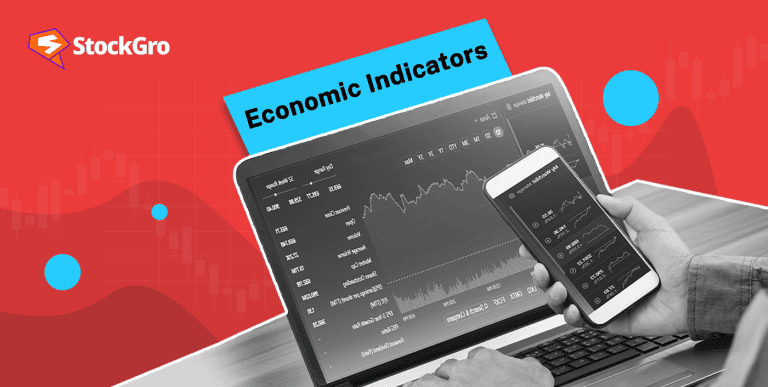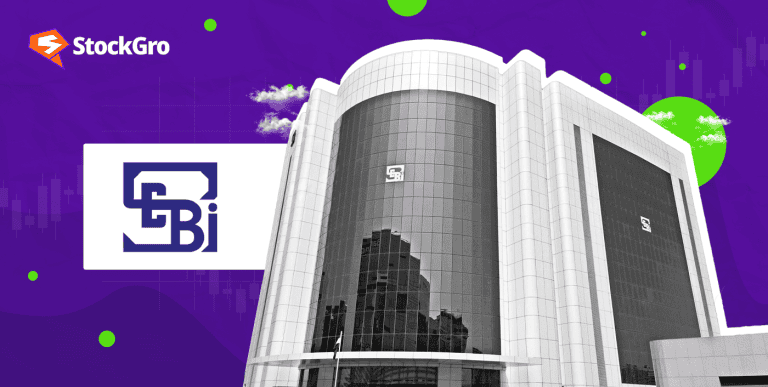
Introduction
Have you ever considered how merchants ascertain the precise price at which a stock is purchased or sold? In fast-paced stock markets, bid and ask prices regulate transaction flow. The bid price is the highest buyer’s bid. The seller’s lowest offer is the asking price. According to NSE Market Pulse, Nifty 50 stocks had an average bid-ask spread of 0.08% in 2023.
Understanding these principles is important since they underpin trading processes, affect transaction results, and inform investors. Below we will examine how bid and ask prices affect the stocks.
Also read: Learn the concept of spot price and its relevance in the stock market.
Decoding bid and ask prices
Bid price
A stock’s bid price is its highest bidder’s price at any given time. This is the most a buyer will pay for shares.
Example: Submitting a bid of ₹500 per share indicates your maximum willingness to pay for a company share. If an investor sells shares at ₹505, less than the asking price, your proposal will not be executed immediately. A bid may be accepted if the market price drops below ₹500, indicating the impact of your offer on stock transactions.
Ask price
Selling a stock at the ask price is the lowest price. This price is the lowest a seller will accept for their shares. Take the example of an investor selling shares for ₹505, which is their minimum acceptable price. Should a buyer submit a bid of ₹500, the transaction will not proceed until it meets or exceeds the requested price. If the bid price reaches ₹505 or above, the seller’s ask price becomes the accepted price, initiating the transaction. Bid-ask prices determine stock transaction time and pricing.
The bid-ask spread: why it matters.
Bid-ask spreads represent the difference between the buying and selling prices of shares. This spread measures market liquidity, or how rapidly assets can be bought or sold without influencing price. The bid-ask spread is lower in liquid markets, allowing high volume and low price impact. Spreads reduce liquidity and raise trading costs.
Trade costs depend on the bid-ask spread. A small spread indicates near bid-offer prices in most liquid, busy markets. If the bid is ₹500 and the asking price is ₹501, the spread is ₹1. Since traders can buy and sell shares without changing the price, this little difference indicates a competitive market with many participants.
Buyers’ highest bids and sellers’ lowest asks make up the bid-ask spread. If the bid is ₹500 and the asking price is ₹510, the spread is ₹10. Trades may cost more to enter or exit positions with a wider spread. Spreads rise with low trade volume or market volatility, limiting liquidity.
Bid and ask prices in action.
Market Orders execute at the current offer price, ensuring a quick transaction. Merchants use market orders to buy or sell stock at the cheapest price. A trader can purchase stock at ₹505 by placing a market order. Market orders are for traders who wish to trade quickly, regardless if it costs more or less.
Limit Orders only execute when the offer price reaches a particular level. Traders might delay transaction execution until the target price is reached. A trader can set a limit order at ₹500 to buy a stock if the price dips below that amount. If the stock’s bid price falls below ₹500, this order will be fulfilled.. Limit orders manage trading prices, however, they might cause delays if the market price doesn’t meet the criteria.
Also read: Mastering the bull spread strategies
Trading strategies
Traders employ bids and ask prices to strategically place orders, affecting execution speed and cost. Market or limit orders can be chosen based on bid and ask prices and trading goals.
Traders can place a market order to buy at ₹500, but at a higher cost, at a bid price of ₹495 and an ask price of ₹500. Limit orders allow traders to buy only at ₹495, potentially increasing their deal. Bid-ask pricing helps traders balance speed and cost, changing strategy and results.
Practical insights for investors
Impact on decision-making
Bid and offer prices might indicate market sentiment and pricing dynamics for investors. Bid and ask prices regulate supply and demand. High bidders pay more, while low bidders pay less. Low bid-ask spreads may reflect market confidence and trading activity, enabling low-cost trades. A growing spread may imply low trading activity or uncertainty, prompting investors to wait or change their plan to avoid larger costs.
These prices help investors judge market circumstances and investor sentiment to decide when to purchase or sell.
Market conditions
Market dynamics strongly impact bid-offer pricing and trading techniques. Bull markets may increase bid and offer prices due to investor optimism and buying. These periods may lower the bid-ask spread due to liquidity and competition, therefore investors should be cautious.
Bid and offer prices might vary substantially in a turbulent bear market. Greater bid-ask spread, lesser liquidity, and greater trading costs. Investors should change their strategy if the spread indicates market instability or lower transaction volume.
In August 2023, Reliance industries’ bid-ask spread increased to ₹15 due to market volatility caused by inflation and interest rate hikes. As traders responded to uncertainty, liquidity decreased and trading costs rose. The bid price was ₹2500 and the offer price was ₹2515.
Also read about: Bullish on Indian stocks? Learn call ratio backspreads strategies
Conclusion
Understanding bid and ask prices helps you choose a market or limit order or adjust your approach to market changes. This information can help you trade more efficiently, control costs, and navigate the ever-changing stock market.
Bid and ask prices are fundamental to understanding how the stock market operates. The bid price is what buyers are willing to pay for a stock, while the ask price is what sellers want in return. To uncover more essential trading secrets and boost your market confidence, download the StockGro app your ultimate guide to simplified investing.
FAQ’s
Q1. How is a stock market bid price defined?
A buyer’s maximum stock purchase is the bid price. It symbolises commercial demand. When the seller’s asking price matches yours, the deal is final. Investors can make smart equity purchases by understanding the offer price, which fluctuates with market conditions, supply, and demand.
Q2. How does an asking price affect trading?
The asking price is the lowest price that a vendor is prepared to accept for the sale of a stock. It is essential for the decision to execute a transaction. Conversely, a lower ask price typically suggests increased market liquidity, whereas a higher ask price may suggest a diminished supply or increased demand.
Q3. How does the bid-ask spread affect stock trading?
Bid-ask spread is the difference between bid and ask prices. A market with a wider spread has lesser liquidity and greater trading expenses, while one with a narrower spread is more liquid and active. Traders analyse the spread to assess market volatility and determine transaction timing.
Q4. What is the importance of market orders versus limit orders?
Market orders are implemented promptly at the current ask price, ensuring a swift transaction, albeit potentially at a higher cost. The execution of limit orders is contingent upon the stock’s arrival at a predetermined price, which provides price control but also delays the trade. It is imperative to have a comprehensive understanding of both in order to effectively manage the cost and velocity of execution.
Q5. Bid and ask prices reflect market sentiment how?
Bid and ask prices reveal market supply and demand. A narrower bid-ask spread indicates liquidity and market confidence, while a wider gap indicates ambiguity or reduced trading activity. These signs can help investors buy or sell stocks.

